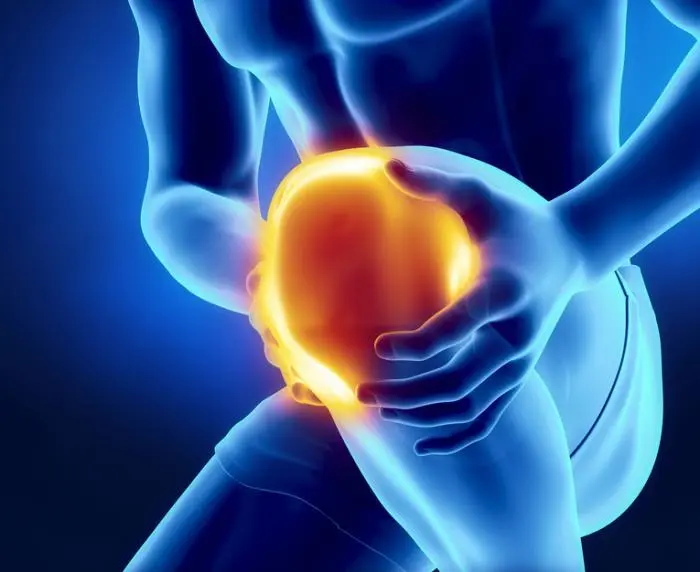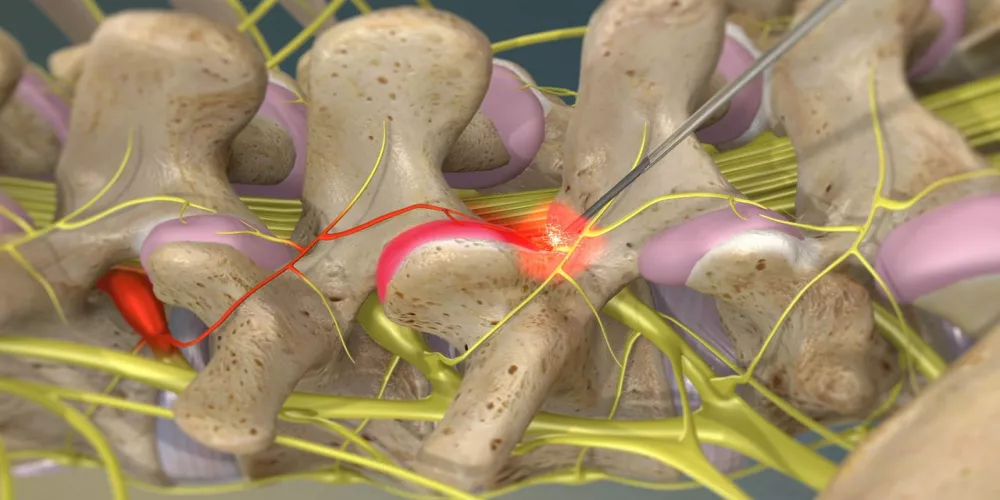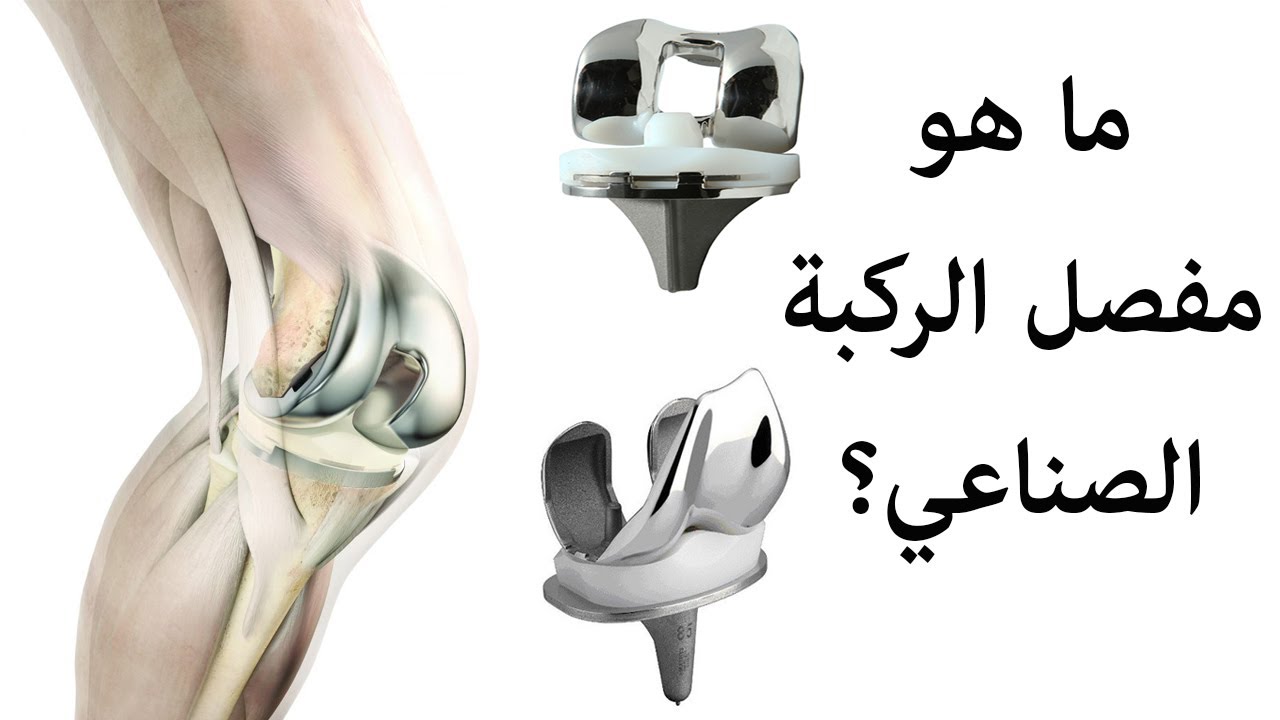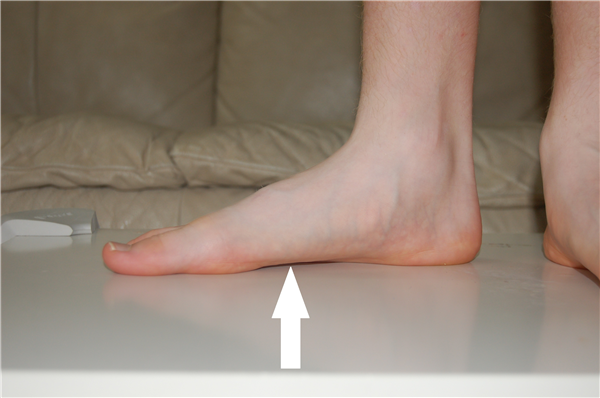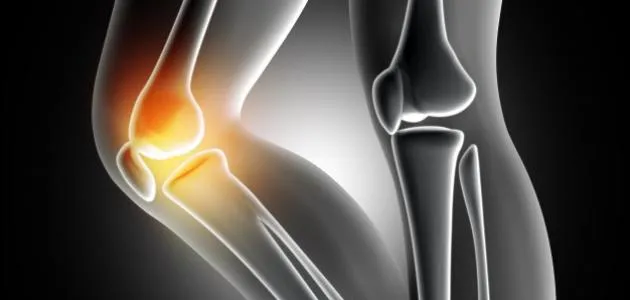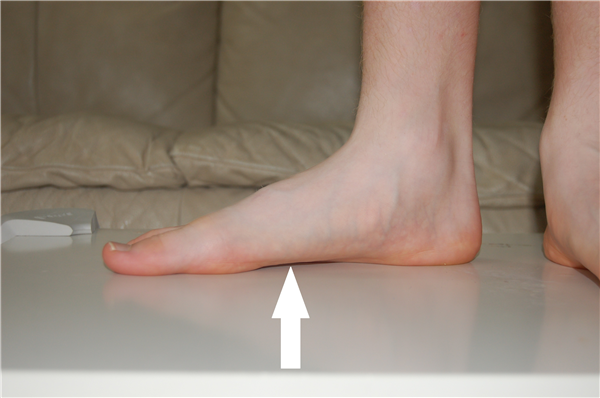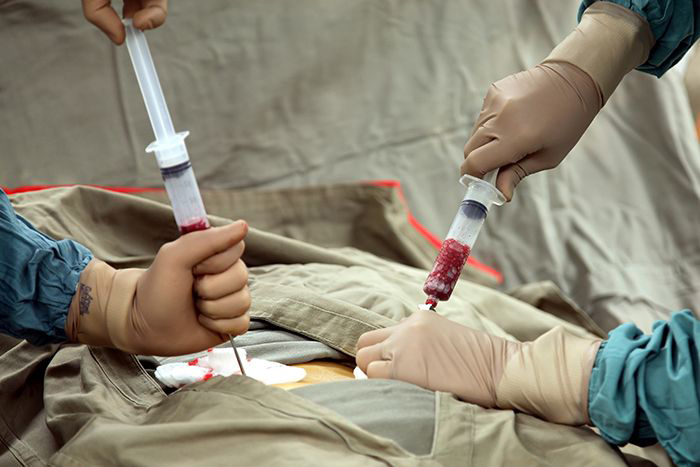Learn About the Causes of Right Shoulder Tendon Tears and Who Is the Best Doctor to Treat Them?

Right Shoulder Tendon Tears
A tear in the tendons of the right shoulder refers to an injury to one or more of the tendons that connect the muscles to the bones in the shoulder area. The shoulder is composed of several tendons and muscles collectively known as the “rotator cuff muscles,” which assist in arm movement in all directions.
Tears in the tendons of the right shoulder can result from acute injuries such as falling on the arm, improper lifting of heavy objects, or they may be due to cumulative wear and tear over time as a result of aging or repetitive activities.
Common symptoms of right shoulder tendon tears include:
- Pain in the shoulder, especially when lifting the arm.
- Weakness in the shoulder.
- Audible cracking or popping sounds when moving the shoulder.
- Swelling and redness.
Diagnosis is typically made through clinical examination and the use of X-rays or magnetic resonance imaging (MRI).
Treatment may initially be conservative, involving the use of pain-relieving medications, physical therapy exercises, and possibly cortisone injections. In severe cases or those that do not respond to conservative treatment, surgery may be necessary.
It is important that the diagnosis and treatment of tendon tears are done correctly to avoid complications and ensure the full recovery of shoulder function. In the following lines of the article, we will delve into this in more detail.
What Are the Symptoms of Right Shoulder Inflammation?
The symptoms of right shoulder inflammation are common issues that individuals may face due to the constant movement and heavy load-bearing on the shoulder joint. In this list, we will highlight some of the most prominent symptoms associated with right shoulder inflammation:
Pain in the Shoulder: Pain in the shoulder is one of the prominent symptoms of right shoulder inflammation. The pain may radiate from the shoulder to the upper arm and collarbone. It can be sharp and worsen over time.
Difficulty in Shoulder Movement: Difficulty in moving the shoulder easily and flexibly, as in normal conditions, is observed. There may be stiffness or freezing of shoulder movement, making daily activities challenging.
Swelling in the Shoulder: Some individuals may notice swelling in the affected area, specifically in the shoulder. Swelling is often associated with shoulder inflammation and is accompanied by pain and limited shoulder movement.
Pain on the Right Side of the Body: In some cases, pain from the shoulder can spread to the right side of the body due to irritation of nerves connected to the shoulder, leading to the spread of pain to adjacent areas.
Muscle Contractions: Right shoulder inflammation may be accompanied by muscle contractions in the surrounding muscles. The person may feel weakness or limited movement in this area.
Difficulty Sleeping on the Right Side: People may have difficulty sleeping on the right side due to pain and swelling in the shoulder. The pain can intensify upon waking from sleep.
Changes in Movement Patterns: In some cases, right shoulder inflammation can lead to changes in the natural movement pattern of the person. Difficulty in walking or lifting heavy objects may be noticed.
It is important that the condition is accurately diagnosed by a specialist physician, and based on that, an appropriate treatment plan is developed. Available treatments may include physical therapy, avoiding painful activities, and taking pain-relieving medications. In some cases, surgery may be recommended by the doctor to permanently resolve the issue.
Delaying a visit to the doctor when symptoms of right shoulder inflammation appear is not advisable, as early diagnosis and appropriate treatment contribute to pain relief and improved quality of life.
How Long Does a Shoulder Ligament Tear Last?
Are you experiencing shoulder pain and disruption of daily movements? You may be suffering from a tear in the shoulder ligaments. While each ligament tear case varies from another, there is some general information about the duration of healing for shoulder ligament tears. In this checklist, we will provide you with basic information about the healing duration of shoulder ligament tears.
Partial Shoulder Ligament Tear Healing Duration: When a partial tear in the shoulder ligaments occurs at the second degree, it is important to use a shoulder brace for a period ranging from 3 to 4 weeks. In addition, the recommended treatment guidelines by the doctor must be followed to achieve proper healing. Therefore, adherence to these measures is necessary to enhance the healing process.
Healing Duration for Shoulder Tendon Tears After Surgery: In the case of arthroscopic repair of shoulder tendons, the patient may need to stay in the hospital for two days. Afterward, the patient may require several sessions of physical therapy, at least 3 times a week, as recommended by the surgeon. This type of treatment aims to restore the natural movement of the shoulder and strengthen the tendons.
Healing Duration for Complete Shoulder Ligament Tears: The healing duration for complete shoulder ligament tears depends on the size and severity of the injury. In cases of larger torn ligaments, surgery may be necessary for repair. This is usually followed by a long period of physical therapy and strengthening of the muscles around the shoulder. Complete recovery may take from 3 to 6 months, and in some cases, up to a year.
Other Factors Affecting the Healing Duration of Shoulder Ligament Tears: Several factors can affect the healing duration of shoulder ligament tears, including:
- Patient’s Age: The older the patient, the less likely full shoulder recovery becomes.
- Size of the Injury: Larger injuries may be more challenging to heal and may take longer for the shoulder to fully recover.
- Adherence to Treatment: Patients must adhere to treatment measures recommended by the doctor, including physical therapy sessions, rest guidelines, and home exercises.
The healing duration of shoulder ligament tears varies depending on the type and size of the injury. Partial tears may require a shoulder brace for 3-4 weeks, while complete tears may require surgery and a period of physical therapy. Please consult a specialist physician for an accurate diagnosis and treatment plan for your specific condition.
Is There a Treatment for a Shoulder Tendon Tear?
Shoulder tendon tears are common injuries that some people may experience. These injuries can result from repetitive stress on the tendons or aging, and they can also occur due to accidents or sports-related activities.
If you have a tear in your shoulder tendon, many may wonder if there is a treatment for this condition. Here, we will take a look at some available options for treating a shoulder tendon tear:
- Physical Therapy: In the case of a minor tendon tear, the doctor may recommend physical therapy. This includes a set of exercises and therapy techniques that help strengthen the muscles around the shoulder and restore the natural range of motion of the joint.
- Medication: In cases where there is inflammation in the tendons without a tear, the doctor may prescribe medications and medical drugs to relieve pain and reduce inflammation. This treatment can serve as a non-surgical option for some cases.
- Surgery: For severe tendon tears, surgery may be recommended to repair the tendons. This surgery is typically performed arthroscopically, where the tendons are reattached and secured in their original position. The patient may need to stay in the hospital for two days after surgery.
- Physical Therapy Sessions: After arthroscopic tendon repair, the patient may require several sessions of physical therapy. During these sessions, the patient will be guided through specific exercises to strengthen the muscles and restore the natural movement of the shoulder.
Regardless of the type of treatment recommended, the patient must closely follow the doctor’s instructions and engage in the exercises provided during physical therapy sessions. The duration of recovery from a shoulder tendon tear may vary depending on the patient’s condition and the chosen treatment.
It is worth noting that medical consultation and a thorough examination are crucial for diagnosing and treating shoulder tendon tear cases. Therefore, it is advisable to visit a specialist physician to accurately assess your condition and determine the appropriate treatment.
How Do I Know If I Have a Shoulder Tendon Tear?
If you experience shoulder pain and suspect a tendon tear, it is best to consult a doctor for a precise diagnosis. However, there are some common signs that may indicate the presence of a shoulder tendon tear. In this article, we will highlight some of these signs:
- Shoulder Pain and Swelling: Pain and swelling are among the most common signs of a torn shoulder tendon. You may feel constant pain in the shoulder and notice increased pain when moving the arm or shaking the shoulder. Swelling may also appear in the affected area.
- Change in Shoulder Appearance: You may notice a deformity in the natural appearance of the shoulder due to the tear. The shoulder may appear distorted or unstable.
- Bruising in the Upper Arm Above the Elbow: In the case of a torn shoulder muscle, bruising may appear in the upper arm above the elbow as a result of severe injury.
- Weakness in the Arm When Moving: You may experience weakness in the arm when attempting to move the affected shoulder. This can be a sign of a shoulder tendon tear.
- Shoulder Instability: In the case of a torn rotator cuff, you may feel shoulder instability. This condition may be accompanied by pain when performing daily activities.
Since shoulder pain can be diverse, and symptoms may be similar in other conditions such as shoulder muscle tears or other injuries, it is best to consult a doctor to determine an accurate diagnosis and receive appropriate treatment.
How to Treat Shoulder Pain at Home?
Shoulder pain is common and usually not a serious concern, but it can persist for a long time, causing discomfort and restriction. Therefore, it’s important to learn some ways to treat shoulder pain at home to alleviate pain and improve your quality of life. Home treatment for shoulder pain is effective and based on three fundamental principles that contribute to improving the condition:
- Resting the Shoulder: You should rest the shoulder completely during the initial hours of pain onset and for 24-48 hours. Using a sling during this time is recommended to reduce movement and relieve pressure on the injured shoulder.
- Shoulder Movement: After a period of rest, you can start moving your arm within its full range of motion. You can perform stretching and strengthening exercises for the muscles around the shoulder to improve muscle strength and reduce pain.
- Applying Ice and Heat: Ice can be used to reduce inflammation and alleviate pain in the affected area. You can place an ice pack on the shoulder for 15-20 minutes several times a day. Afterward, you can use a heat source such as a warm bath or a warm cloth on the shoulder to relieve pain and improve blood circulation.
In addition to home treatment, it’s important to take precautions to avoid shoulder injury and prevent recurring pain in the future. You may consider the following preventive tips:
- Avoid carrying heavy weights on the injured shoulder.
- Use supportive pillows while sleeping to support the shoulder and reduce pressure on it.
- Maintain good sitting and standing posture to avoid tension on the shoulder.
- Work on strengthening the shoulder and back muscles through muscle-strengthening exercises.
If your shoulder condition does not improve or the pain persists, it is advisable to consult a specialized doctor for a proper evaluation. A physical therapist may conduct the necessary examination and recommend physical therapy sessions to improve shoulder function and alleviate pain. Physical therapy can be an effective option to expedite the healing process, improve shoulder mobility, and enhance strength.
In general, it is recommended to consult a doctor before implementing any type of home treatment to ensure it aligns with your health condition and to avoid any complications. Pay attention to your body and don’t hesitate to seek medical assistance when needed.
When Is Right Shoulder Pain Serious?
When a person experiences right shoulder pain, they may wonder about its severity and when it may indicate a serious health issue. It’s important to know that right shoulder pain rarely suggests a serious condition that warrants concern. Feeling pain in the right shoulder is very common and can be attributed to the continuous motion of the shoulder joint, which exposes the ligaments and muscles in this area to tearing or injury, resulting in pain.
It’s worth noting that concern increases when right shoulder pain is accompanied by other symptoms or includes the left shoulder or both shoulders. In such cases, there may be a sign of a heart attack. Therefore, when any of these symptoms appear, it’s essential for the person to visit a doctor immediately to assess their health condition properly.
Generally, there are common causes of right shoulder pain, including rotator cuff injuries. Individuals may experience right shoulder pain while sleeping due to extra pressure from sleeping on the right side. Pain can also occur due to tendon or bursa inflammation, bone spurs, or impingement.
Additionally, the deterioration of cartilage in the shoulder joint can lead to joint inflammation, which may cause pain and swelling. This problem tends to worsen in older adults and those with previous shoulder injuries.
Furthermore, right shoulder pain can result from tendon and muscle overuse due to falls, heavy lifting, or excessive use of the shoulder in movements.
Therefore, in most cases, right shoulder pain does not pose a significant risk, except when accompanied by other symptoms or when it persists for an extended period without improvement. In such cases, it is advisable to visit a doctor for a proper shoulder evaluation and to determine the appropriate treatment for the condition.
How to Get Rid of Shoulder Tendonitis?
If you’re suffering from shoulder tendonitis and want to know how to get rid of it, here are some tips that may help:
- Avoid excessive use of the affected shoulder and avoid putting excessive force on it. You may need to reduce activities involving repetitive motions for a period of time.
- Use ice packs on the affected area to reduce pain and swelling. Place ice on the shoulder for 15 to 20 minutes every two hours for the first two days, then reduce the frequency to 3 to 4 times a day.
- Follow the advice of a specialized doctor and use prescribed medications regularly. These medications may include aspirin or ibuprofen to relieve pain and inflammation.
- Physical therapy may be necessary to restore normal shoulder motion and reduce the pain associated with tendonitis. A physical therapist can guide you in performing specific exercises aimed at strengthening and stretching the affected tendons.
- Other treatments such as infrared therapy, ultrasound therapy, or deep tissue massage may also be effective in relieving pain and improving blood circulation in the affected area.
If your symptoms do not improve and the pain and restricted shoulder movement persist, your doctor may recommend shoulder surgery to restore the function of the affected shoulder.
Do not hesitate to consult a specialized doctor if you do not feel improvement or if your symptoms worsen. Some individuals may require additional treatments or consultation with another specialist.
Remember the importance of rest and maintaining proper body posture while standing and sitting, taking care of your sleep, and regular relaxation. Adhering to these tips may help you effectively get rid of shoulder tendonitis.
How to Treat a Shoulder Injury?
When you sustain a shoulder injury, there are several approaches to treat it and promote healing. Surgical repair of torn shoulder ligaments is a common treatment option for severe injuries. Surgical treatment involves reattaching torn ligaments through arthroscopic surgery. This procedure requires careful monitoring and postoperative rest, and patients often need physical therapy sessions to enhance recovery and regain natural shoulder motion.
For mild to moderate shoulder injuries, the treatment approach focuses on pain reduction and healing promotion. Initially, it is advised to avoid repeating movements that caused the injury and to steer clear of painful activities. Reducing heavy lifting and engaging in activities that require raising the shoulder above the head should be minimized until the shoulder condition improves. Applying ice to the shoulder is recommended to reduce inflammation and pain. Cold packs, ice bags, or a towel filled with ice cubes can be used for 15 to 20 minutes at a time. It is advisable to consult a doctor before starting ice therapy for precise recommendations.
Once the injury has healed and shoulder motion is restored, it is recommended to engage in strength-building exercises to strengthen and stabilize the shoulder. Shoulder stretching exercises and a shoulder strengthening and stability exercise program can help prevent further internal injuries to the shoulder joint. Your general practitioner or an emergency physician may advise a visit to an orthopedic surgeon for further diagnosis and treatment recommendations, considering the severity of the injury.
X-rays of the shoulder joint can reveal dislocations, fractures, or any other damage to the shoulder joint. Some common interventions for treating a dislocated shoulder include gentle exercises to manipulate and return the shoulder bones to their natural position. Muscle relaxants or pain relievers are advised in cases of severe pain and swelling, and in rare cases, patients may require general anesthesia before manipulating the shoulder bones.
These are some common methods for treating a shoulder injury. Consultation with specialized doctors and adherence to their recommendations is crucial to determine the appropriate treatment for your specific condition. Some patients may require surgery to fully restore the shoulder and improve their daily quality of life. Surgical treatment depends on the extent of the injury, the patient’s condition, and the treating doctor’s recommendation.
What Causes Pain in the Right Shoulder?
Pain in the right shoulder can be caused by several different factors, and it’s important to understand the underlying cause of the pain. Inflammation in the tendons of the rotator cuff can be one common reason for right shoulder pain. This can occur as a result of injury to the tendons or due to excessive use of the right shoulder.
There are also other issues that can lead to right shoulder pain. For example, injuries to organs near the chest area, such as the lungs, can cause pain in the right shoulder. Muscle and bone problems in the chest area can also result in shoulder pain.
Issues with the rotator cuff, including tears or inflammation, are also common sources of right shoulder pain. The pain may result from a tear or inflammation of the rotator cuff.
However, it’s important to note that shoulder pain can be a common problem and may resolve on its own without the need for treatment. But in some cases, the pain can be severe, especially if it’s accompanied by abdominal pain. In such cases, it’s essential to consult a doctor immediately to avoid any further complications.
The Center for Diagnosing and Treating Right Shoulder Pain is a good source for getting assistance and the appropriate treatment. This center has extensive experience in treating shoulder and neck pain and utilizes the latest techniques and treatments to relieve pain and improve the overall condition of patients.
The treatment for right shoulder pain requires identifying the primary cause of the pain. Physical therapy can be one of the methods used to treat shoulder pain. Physical therapy aims to rehabilitate the shoulder, strengthen the muscles, and improve joint mobility. Treatment also includes training in movements and activities related to sports, work, or daily activities so that patients can return to their normal level of activity.
In general, it is important to identify the cause of right shoulder pain and consult with a specialized doctor about suitable treatment methods. Strengthening the shoulder and improving its condition through physical therapy or other appropriate treatment methods is essential for the patient.
Best Doctor for Treating Shoulder Tendonitis
If you are experiencing issues with shoulder tendons and are looking for the right doctor to diagnose and treat your condition, we recommend Dr. Amr Amal, who is considered one of the best physicians in the field of shoulder tendon treatment in Cairo. Dr. Amr Amal possesses several important qualities that make him the first choice for patients in this specialty. In this article, we will highlight some important information about this distinguished doctor.
- Extensive Experience and High Qualifications
Dr. Amr Amal has extensive experience in the field of orthopedic surgery, specifically shoulder surgery. He has been working in this field for many years, making him highly proficient in dealing with tendon problems in the shoulder. He holds the title of Professor of Orthopedic Surgery at Ain Shams University and is a prominent faculty member there.
- Use of the Latest Techniques and Tools
Dr. Amr Amal is dedicated to providing modern treatments and using the latest techniques in shoulder surgery. He continuously keeps up with scientific and technological developments in the diagnosis and treatment of tendon problems in the shoulder. This enables him to offer diverse treatment options to patients and ensure successful surgery.
- Comprehensive Examination and Accurate Diagnosis
Dr. Amr Amal is known for his ability to conduct a comprehensive examination of the shoulder as quickly as possible, allowing him to identify the patient’s condition and determine the appropriate treatment. He pays close attention to the details of the patient’s condition and provides an accurate diagnosis of tendon problems in the shoulder.
- Compassion and Patient Care
Dr. Amr Amal is concerned about the comfort and satisfaction of his patients. He adopts a humane approach when dealing with them. He listens attentively to their concerns and offers valuable guidance for recovery. His gentle and understanding demeanor helps patients feel confident and comfortable during treatment.
- Online Appointment Booking
To facilitate the appointment booking process with Dr. Amr Amal, patients can book appointments online. You can search for various platforms that provide online booking services for Dr. Amr Amal in Nasr City. This helps you schedule a convenient visit and receive treatment without the hassle of waiting in queues.
Consult Dr. Amr Amal for Shoulder Tendon Problems
When it comes to treating tendon problems in the shoulder, Dr. Amr Amal is an excellent choice in Cairo. He combines high expertise with patient care, making him a professional and dedicated physician in providing exceptional diagnosis and treatment for shoulder tendon problems. Book an appointment with him now and ensure you receive the best treatments to overcome shoulder issues with confidence and comfort.

